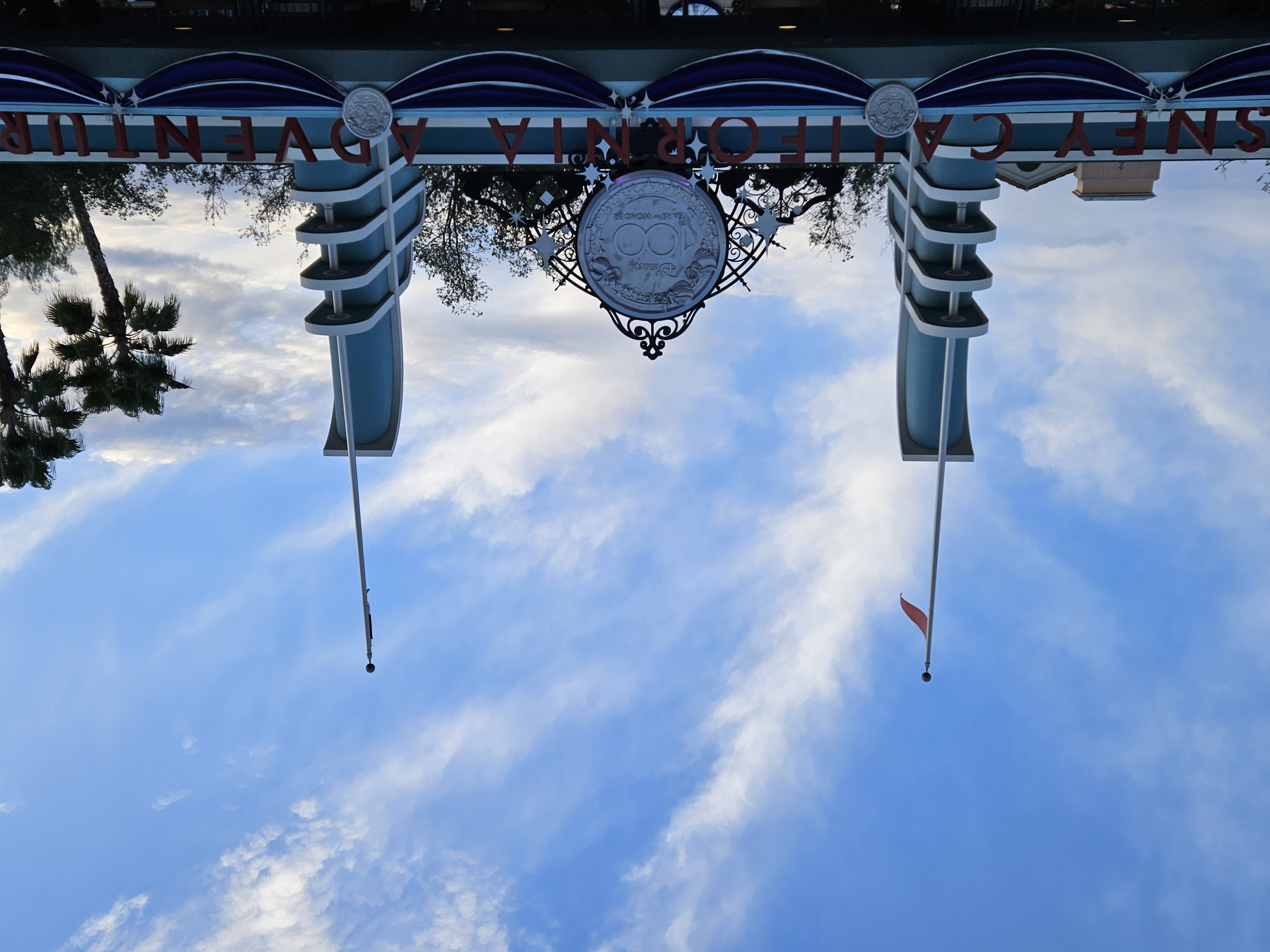The Samsung Galaxy S23 is an extremely capable smartphone, and with it comes the inevitable comparisons between Samsung’s new 2023 handset and the now-established iPhone 14 that Apple launched last fall. Simply put, they’re two of the best phones available today.
- Samsung Galaxy S23 vs. iPhone 14: specs
- Galaxy S23 vs. iPhone 14: design and display
- Galaxy S23 vs. iPhone 14: performance and battery
- Galaxy S23 vs. iPhone 14: cameras
- Galaxy S23 vs. iPhone 14: software and updates
- Galaxy S23 vs. iPhone 14: special features
- Galaxy S23 vs. iPhone 14: price and availability
- Overall winner: Samsung Galaxy S23
Both the Galaxy S23 and the iPhone 14 are the best smartphone for most folks within their respective ecosystems, so it’s a pretty straightforward choice if you’re already invested in Android or iOS. On the other hand, if you’ve been on the fence about which platform to go with, or you’re considering a change, then it may be helpful to know how they stack up against each other.
Samsung Galaxy S23 vs. iPhone 14: specs
| Samsung Galaxy S23 | Apple iPhone 14 | |
| Size | 146.3 x 70.9 x 7.62 mm (2.79 x 5.76 x 0.3 inches) | 146.7 x 71.5 x 7.8mm (5.78 x 2.82 x 0.31 inches) |
| Weight | 168 grams (5.93 ounces) | 172 grams (6.07 ounces) |
| Screen size | 6.1-inch Dynamic AMOLED 2X | 6.1-inch Super Retina XDR (OLED) display |
| Screen resolution | FHD+ at 425 pixels per inch | 2532 x 1170 at 460 pixels per inch |
| Operating system | Android 13 with One UI 5.1 | iOS 16 |
| Storage | 128GB, 256GB | 128GB, 256GB, 512GB |
| MicroSD card slot | No | No |
| Tap-to-pay services | Google Pay, Samsung Pay | Apple Pay |
| Processor | Snapdragon 8 Gen 2 for Galaxy | A15 Bionic |
| RAM | 8GB | 6GB |
| Cameras | Rear: 50-megapixel (MP) primary, 12MP ultrawide, and 10MP telephoto
Front: 12MP |
Rear: 12-megapixel (MP) primary, 12MP ultrawide.
Front: 12MP |
| Video | Rear: Up to 8K at 30 frames per second (fps), 4K at 60 fps, FHD at 120 fps, and 960 fps for slow motion
Front: Up to 4K at 60 fps |
Rear: Up to Dolby Vision HDR 4K at 60 frames per second (fps), 1080p slow motion at 240 fps
Front: Up to 4K at 60 fps |
| Bluetooth | Yes | Yes |
| Ports | USB-C | Lightning |
| Biometrics | Ultrasonic in-display fingerprint sensor and Face Recognition | Face ID |
| Water resistance | IP68 | IP68 |
| Battery | 3,900mAh Super Fast Charging at 25W Fast Wireless Charging 2.0 Wireless PowerShare |
3,279mAh USB-PD Fast Charging at 20W MagSafe Wireless Charging at 15W |
| App marketplace | Google Play Store | App Store |
| Network support | 5G mmWave | 5G mmWave |
| Colors | Phantom Black, Cream, Green, and Lavender | Blue, Purple, Midnight, Starlight, (Product)Red |
| Price | From $799 | From $799 |
| Available from | Samsung and most major carriers and retailers | Apple and most major carriers and retailers |
| Review | Galaxy S23 review | iPhone 14 review |
Galaxy S23 vs. iPhone 14: design and display

Unlike Apple, which generally reserves its best displays for its “Pro” models, Samsung puts its leading-edge AMOLED technology into its entire lineup. That means that while the iPhone 14 display lags behind the more expensive iPhone 14 Pro, Samsung’s Galaxy S23 has the same gorgeous screen technology as the premium Galaxy S23 Ultra.
While it’s a bit smaller, the Galaxy S23 is still a 6.1-inch AMOLED 2X Infinity-O with FHD+ resolution and a density of 425 pixels per inch. While that’s roughly on par with the 6.1-inch OLED display in the iPhone 14 in terms of raw resolution, the Galaxy S23 display pulls well ahead by offering an adaptive 120Hz refresh rate, 1,750 nits of peak outdoor brightness, and always-on technology — all things that Apple only provides on its pricier iPhone 14 Pro.

Instead, the display on the iPhone 14 is barely an upgrade from its 2021 predecessor. It still only runs at a fixed 60Hz and hits 800 nits to 1,200 nits of peak brightness, depending on whether you’re using HDR or not. There’s also no always-on technology here. While it’s still a solid OLED display, it doesn’t hold a candle to what the Galaxy S23 offers you for basically the same price.
Beyond the display, the iPhone 14 and Galaxy S23 are pretty evenly matched in the design and durability departments. Both feature IP68 water and dust resistance with durable glass — Apple’s Ceramic Shield on the iPhone 14 and Corning’s Gorilla Glass Victus 2 on the Galaxy S23. The newer Gorilla Glass is theoretically more durable against drops, but that’s something that’s pretty hard to measure. Nevertheless, the Galaxy S23 edges out the iPhone 14 by offering Gorilla Glass on the back of the phone as well. It may not matter so much if you’re going to slap one of the best Galaxy S23 cases on it anyway, but it’s a nice bonus either way.
Winner: Galaxy S23
Galaxy S23 vs. iPhone 14: performance and battery
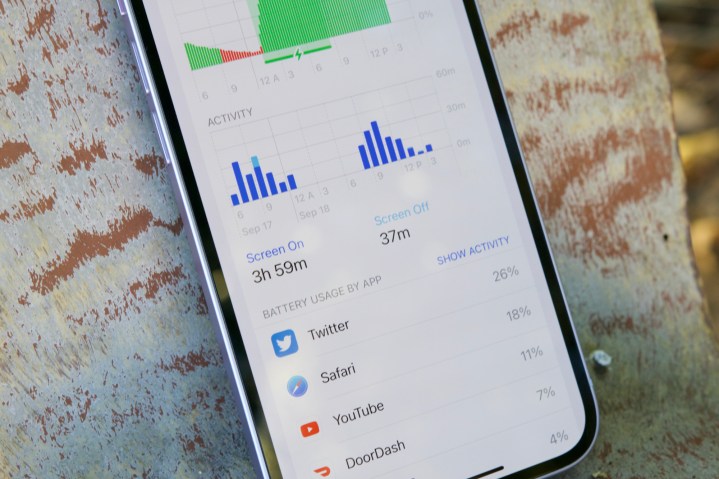
It’s hard to get a true measure of performance when comparing the iPhone 14 to the Galaxy S23, since not only is the hardware fundamentally different, but they also use entirely different operating systems. As with nearly every iPhone ever released, the iPhone 14 uses Apple’s own custom-made silicon, while Samsung uses a (mostly) off-the-shelf Qualcomm Snapdragon chip for the Galaxy S23.
However, a couple of interesting things have happened this year that should put the Galaxy S23 well ahead of the phone from Apple. First, Apple has given itself a competitive disadvantage by using the older A15 chip in the iPhone 14, setting it even further apart from the iPhone 14 Pro, which uses the latest A16 Bionic. While the A15 is still a powerful chip, it’s hard to imagine it competing with the cutting-edge Snapdragon 8 Gen 2 that Samsung has packed into all of its S23 models. Yes, you read that right: unlike Apple, Samsung isn’t reserving its best chip for the premium Galaxy S23 Ultra — the base model Galaxy S23 gets the same silicon, and therefore, the same performance.

However, this isn’t an off-the-shelf chip. Samsung has partnered with Qualcomm to develop an even more powerful bespoke Snapdragon 8 Gen 2 that the company promises will boost performance by up to 50% over last year’s Galaxy S22. Apple’s A15 chip handily beat out the Galaxy S22 in performance benchmarks, but that was a year ago. Samsung has moved on to bigger and better things in the Galaxy S23, while Apple’s iPhone 14 is still using 2021-era silicon.
It’s a closer race when it comes to battery life and charging speeds. While the Galaxy S23 packs in a larger battery at 3,900mAh compared to the iPhone 14’s 3,279mAh cell, that doesn’t necessarily pan out to longer battery life. Apple’s A-series chips excel at power management, and it shows.
Despite the smaller battery, you shouldn’t have any trouble getting through a day of heavy use on a single charge. If you’re not using the S23 as your primary and only device, you can squeeze out two days of use on a single charge. But for most people, expect a full day of battery life per charge — just like the iPhone 14.
The Galaxy S23 offers slightly faster charging speeds — 25 watts compared to the iPhone 14’s 20W — but that’s not likely to make a huge difference in practical terms. Both phones technically support 15W wireless charging; however, in Apple’s case, you’ll have to spend a bit more for a MagSafe-certified charger to get those speeds.
Winner: Galaxy S23
Galaxy S23 vs. iPhone 14: cameras
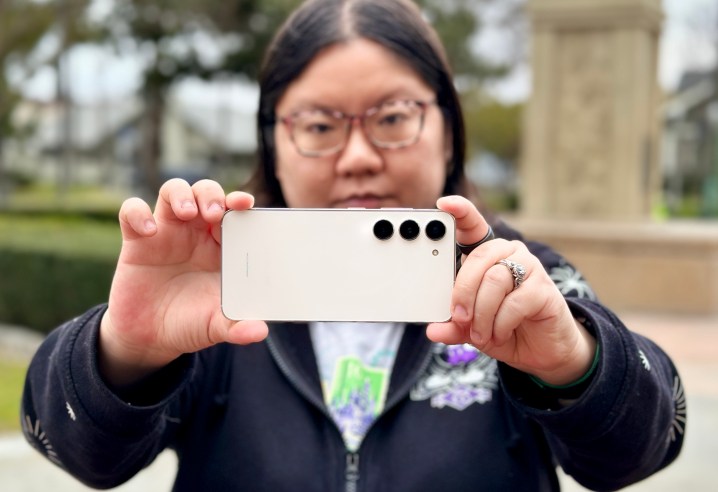
Neither Samsung nor Apple have significantly upped their cameras from their predecessors. That probably isn’t too surprising, as both companies use cameras to set their premium “Pro” and “Ultra” models apart, but it also means not much has changed since we put the Galaxy S22 and the iPhone 13 head-to-head.
The Galaxy S23 sports the same three-lens system as last year’s Galaxy S22 — a 50-megapixel (MP) main camera, a 12MP ultrawide, and a 10MP telephoto. The iPhone 14 retains the dual-camera setup common to all of Apple’s non-Pro models, with a 12MP wide main camera joined by a 12MP ultrawide.
This seems to give the Galaxy S23 a clear advantage in raw specs. However, it’s important to remember that more megapixels don’t automatically translate to better photos; after all, it’s not how many megapixels you have, but what you do with them that counts.
In practice, the Galaxy S23 delivers excellent photos. The main 50MP camera makes it virtually impossible to grab a bad shot, and the ultra-wide camera is equally reliable. Pictures are a bit more vibrant and colorful than photos you get from the iPhone. They aren’t as 1:1 accurate with the real world, but they’re very pleasing to look at.
You also get a lot of versatility from the telephoto camera. 3x shots look great, and even 10x pictures are usable. Portrait mode photos are also solid, often looking better than the more expensive iPhone 14 Pro.
Winner: Galaxy S23
Galaxy S23 vs. iPhone 14: software and updates
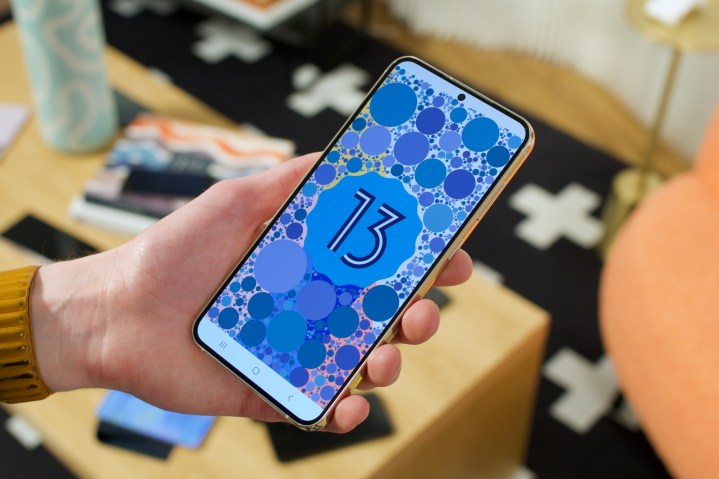
The Galaxy S23 ships with Android 13 and Samsung’s OneUI 5.1 preinstalled, while the iPhone 14 comes with Apple’s iOS 16. Since these are two entirely different operating systems, it’s hard to declare one a clear winner over the other. Both are best-in-class platforms, and it all comes down to personal preference and the choice of which software ecosystem you prefer to live in.
Nevertheless, there’s one area in which Apple has consistently run rings around its Android counterparts, and that’s in pure longevity. Samsung only recently began promising four years of Android updates for its phones, with an extra fifth year of security updates. That’s well ahead of most other Android handset makers, but still falls short of Apple, which has traditionally supplied at least five years of iOS updates for its phones, and sometimes even six. The 2015-era iPhone 6s could still be updated to iOS 15 when it was released in 2021, and while Apple drew the line at the 2017 iPhone 8 with iOS 16 last year, that’s still a year better than what Samsung is promising.
So, while the Samsung Galaxy S23 will someday be able to run Android 17, it’s fair to say that the iPhone 14 will go to at least iOS 21 and beyond. You may not plan to hold onto your iPhone that long, but it’s nice to know you have the option.
Winner: iPhone 14
Galaxy S23 vs. iPhone 14: special features
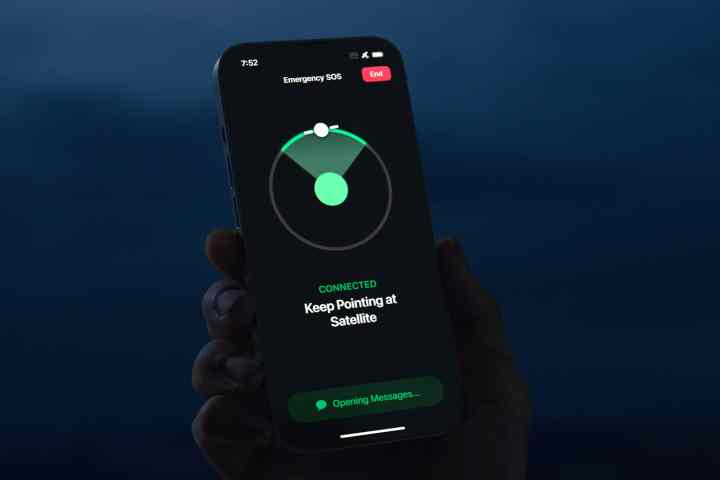
Last year, Apple introduced two pretty significant safety features in its iPhone 14 lineup: Emergency SOS via Satellite and Car Crash Detection. These are things that we hope you’ll never have to use. Ideally, they’ll just hide away in the background, and you may forget they’re even there — but they’ll come through for you in a pinch.
While Apple’s rivals are clearly working hard to catch up, Samsung hasn’t yet added this kind of satellite connectivity to the Galaxy S23 — despite some speculation that it was coming. That’s not to say that the Galaxy S23 isn’t a very capable smartphone, but it doesn’t really have anything innovative that stands out against the iPhone 14’s safety enhancements.
Winner: iPhone 14
Galaxy S23 vs. iPhone 14: price and availability

Samsung’s Galaxy S23 is available for purchase now from Samsung’s website. The price starts at $799 for the 128GB base model, and it’s available in Phantom Black, Green, Cream, and Lavender — plus Graphite and Lime colors exclusively from Samsung.com.
The iPhone 14 is currently on sale at Apple and most major carriers and retailers. The same $799 starting price also gets you the 128GB base model in your choice of Blue, Purple, Midnight, Starlight, or Product Red.
Overall winner: Samsung Galaxy S23
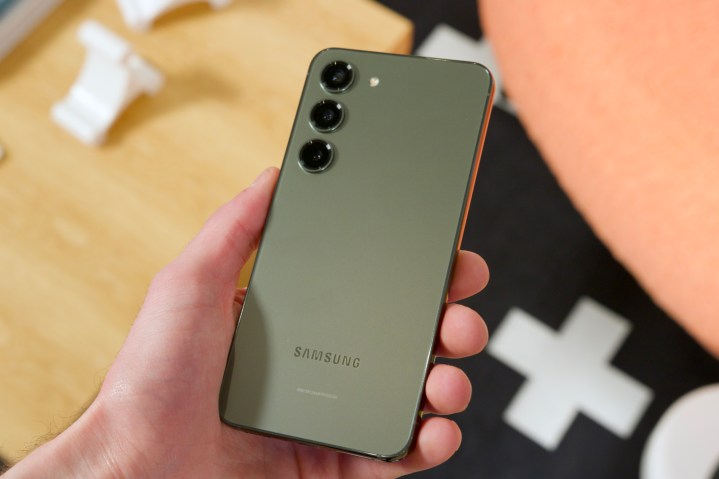
The iPhone 14 remains a stable and reliable smartphone with better battery life, great cameras, and a longer life cycle. These set the iPhone 13 apart from the Galaxy S22 last year, but this time around, the Galaxy S23 pulls ahead — largely because Apple has ceded some of the ground to it.
The Galaxy S23 has a brighter and faster 120Hz display and a telephoto camera — both things that Apple customers have to upgrade to the iPhone 14 Pro to get — but this year, it also has a much more modern processor, which, thanks to Apple, is something else that iPhone fans now have to jump up to the Pro for.
While the Galaxy S23 isn’t a huge upgrade over the Galaxy S22, Samsung has updated the things that matter the most. On the other hand, you’d be hard-pressed to tell the iPhone 14 apart from the iPhone 13 that came before. That’s not a bad thing — it’s still the best iPhone for most folks, and now it has some important new safety features — but it’s also starting to feel like it’s reached its zenith.
Editors' Recommendations
- The one thing the iPhone 14, Galaxy S23, and Pixel 7 all get wrong
- Common Samsung Galaxy S23 problems (and how to fix them)
- Will my phone automatically change for daylight saving time?
- I did a Galaxy S23 Ultra vs. Pixel 7 Pro camera test — and it’s not even close
- Apple, please release the iPhone 14 in these colors next


